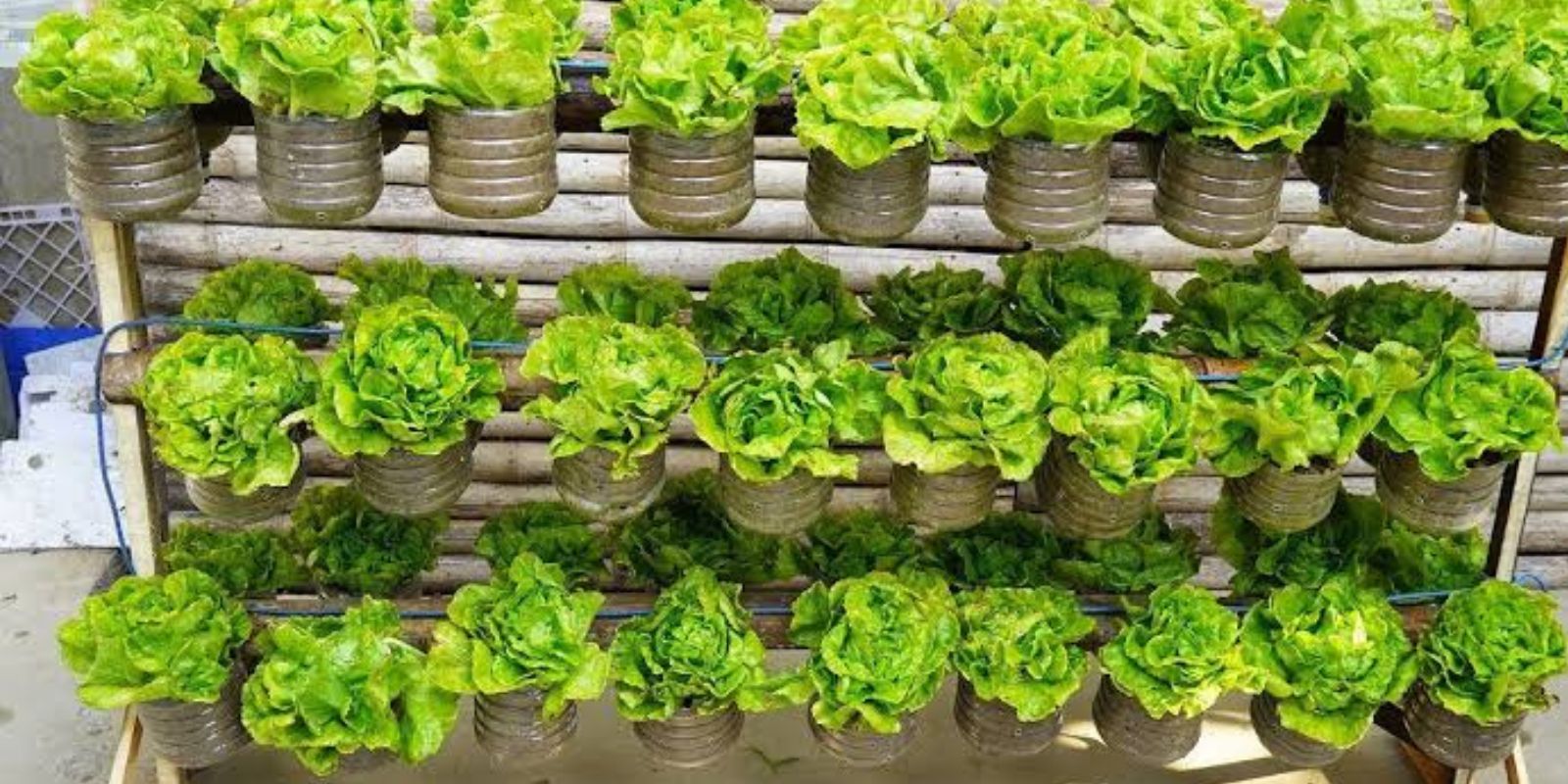Growing lettuce at home in containers is a rewarding and simple way to enjoy fresh, organic greens all year round. Lettuce grows quickly, takes up little space, and thrives in various conditions, making it ideal for home gardeners, especially those with limited outdoor space. Whether you want to grow crisp romaine, tender butterhead, or vibrant leaf lettuce, this guide will provide everything you need to cultivate a successful container-grown lettuce garden.
Why Grow Lettuce in Containers?
Growing lettuce in containers offers several benefits:
- Space Efficiency: Perfect for balconies, patios, or small gardens.
- Pest Control: Easier to manage pests and diseases.
- Year-Round Harvest: Can be grown indoors during winter months.
- Freshness: Harvest fresh leaves whenever needed for salads, sandwiches, and more.
Choosing the Right Container
Lettuce has a shallow root system, so you don’t need a deep container. However, choosing the right size and material will impact growth.
Container Size & Depth
- A container should be at least 6 inches deep to allow room for roots.
- Wider containers are better than deep ones, as lettuce grows outward rather than downward.
- For multiple plants, a rectangular or long container works best.
Best Container Materials
- Plastic pots retain moisture well and are lightweight.
- Ceramic or clay pots provide good insulation but dry out faster.
- Fabric grow bags offer excellent drainage and air circulation.
Ensure the container has drainage holes to prevent root rot.
Selecting the Right Lettuce Variety
There are three main types of lettuce to consider:
- Leaf Lettuce (Looseleaf): Fast-growing and easy to harvest. Popular varieties include Black-Seeded Simpson and Red Sails.
- Romaine (Cos Lettuce): More structured and crunchy. It takes longer to mature but is highly nutritious.
- Butterhead (Boston & Bibb): Tender, small heads with a buttery texture.
Choose a variety based on your preference and climate conditions. Leaf lettuce is the easiest for beginners due to its rapid growth and continuous harvest potential.
Best Soil for Growing Lettuce in Containers
Lettuce thrives in well-draining, nutrient-rich soil. Use a high-quality potting mix rather than garden soil, which may contain pests and compact easily.
Ideal Soil Mix for Lettuce:
- 50% potting soil (light and aerated)
- 30% compost (adds nutrients)
- 20% perlite or vermiculite (improves drainage and aeration)
A slightly acidic to neutral pH between 6.0-7.0 is ideal for lettuce. You can check your soil pH with a simple test kit.
Planting Lettuce in Containers
1. Direct Seeding vs. Transplanting
- Direct Seeding: Sow seeds ¼ inch deep, spaced about 1 inch apart. Thin seedlings to about 4-6 inches apart once they sprout.
- Transplants: If using seedlings, plant them at the same depth they were growing in their original container.
2. Providing the Right Conditions
Lettuce prefers cool temperatures between 55-70°F (13-21°C). It can tolerate some shade, but for the best growth:
- Provide 4-6 hours of direct sunlight or use grow lights indoors.
- If growing in warm climates, offer afternoon shade to prevent bolting (when lettuce flowers and turns bitter).
3. Watering
Lettuce requires consistent moisture to grow well, but overwatering can cause root rot.
- Water when the top inch of soil feels dry.
- Use a gentle spray to avoid disturbing delicate roots.
- Avoid letting the soil dry out completely.
4. Fertilizing for Healthy Growth
Lettuce is a light feeder but benefits from organic fertilizers like:
- Compost tea or fish emulsion every 2 weeks.
- A balanced organic fertilizer (such as 10-10-10) once a month.
Avoid too much nitrogen, as it can cause excessive leaf growth but make lettuce taste bitter.
Caring for Lettuce in Containers
1. Mulching
Adding a thin layer of mulch (straw or shredded leaves) helps retain moisture and keeps soil cool, preventing bolting.
2. Pest and Disease Control
Common lettuce pests include:
- Aphids: Spray with neem oil or a mild soap solution.
- Slugs & Snails: Use crushed eggshells or diatomaceous earth around the base of plants.
- Fungal Diseases: Ensure good airflow and avoid overhead watering.
3. Preventing Bolting
Bolting (flowering) happens when lettuce is exposed to hot temperatures or stress. To prevent this:
- Grow heat-resistant varieties in warm climates.
- Keep soil moist and provide partial shade in summer.
- Harvest outer leaves regularly to encourage new growth.
Harvesting Lettuce for Continuous Growth
Lettuce can be harvested as soon as leaves are large enough to eat. The best harvesting methods depend on the type of lettuce:
- Cut-and-Come-Again Method (Leaf Lettuce): Snip outer leaves while letting inner leaves grow. This allows multiple harvests from one plant.
- Full-Head Harvest (Romaine & Butterhead): Cut the whole head at the base, leaving a small stump for potential regrowth.
For best taste, harvest in the morning when leaves are crisp and full of moisture.
Growing Lettuce Indoors in Winter
Lettuce can be grown indoors year-round using grow lights. To successfully grow lettuce inside:
- Use LED grow lights for 12-16 hours daily.
- Keep the temperature around 60-70°F (15-21°C).
- Maintain good air circulation to prevent mold.
Troubleshooting Common Issues
- Lettuce is too bitter?
- It may be overripe or exposed to too much heat. Harvest younger leaves and provide shade.
- Leaves are turning yellow?
- Overwatering or poor drainage. Reduce watering and ensure proper drainage.
- Leggy growth?
- Not enough light. Move plants to a sunnier location or use grow lights.
Final Thoughts: Enjoy Your Homegrown Lettuce!
Growing lettuce in containers is one of the easiest ways to start gardening at home. With minimal effort, you can enjoy fresh, crisp greens straight from your patio, balcony, or kitchen windowsill.
🌱 Have you tried growing lettuce at home? Let us know in the comments below!

